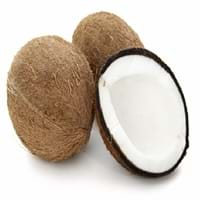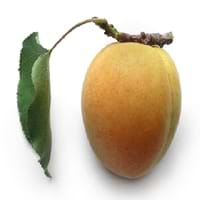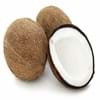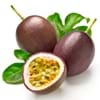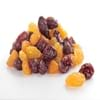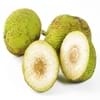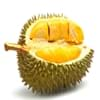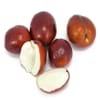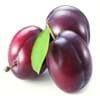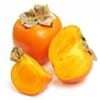Health Benefits
Acidity treatment, Acts as natural antibiotic, Anti-oxidant properties, Aphonia treatment
Asthma treatment, Cancer prevention, Controls blood pressure, Digestive aid, Heart care, Maintains hormonal balance, Regulation of heart rate, Skin cleansing, Skin rejuvenation
General Benefits
Anti-inflammatory properties, Body hydration, Boosts immune system, Controls blood sugar levels, Digestive aid, Fights against infections, Flu treatment, Healing of wounds, Helps in weight loss, Maintains healthy cholesterol level
Boosts immune system, Controls blood pressure, Digestive aid, Eye care, Maintains healthy cholesterol level, Strengthens bones
Skin Benefits
Anti-aging benefits, Heals sunburn, Hydrates skin, Reduces wrinkles, Skin rejuvenation, Skin revitalization, Treatment of skin diseases
Hydrates skin, Reduces wrinkles, Treatment of dark spots, Treatment of skin diseases
Hair Benefits
Promotes longer and healthier hair, Regulates hair growth, Rejuvenates scalp, Shiny hair, Treatment of dandruff
Good conditioner, Regulates hair growth, Rejuvenates scalp, Softening mask, Treatment of dandruff
Allergy Symptoms
Abdominal pains, Breathing difficulty, Itching in tongue and other parts of mouth, Nasal congestion, Nausea, Runny nose, Vomiting
Abdominal cramps, Anaphylaxis, Breathing difficulty, Diarrhea, Itching of mouth, Itching sensation in throat, Swelling of mouth, tongue or lips, Vomiting, Wheezing
Side Effects
Allergic reaction, Indigestion, Weight gain
Dizziness, Headache, Nausea, Vomiting
Best Time to Eat
Along with meal, Best if taken as a breakfast (or empty stomach), As a snack in the late afternoon, Morning time (before lunch)
Best if taken as a breakfast (or empty stomach), As a snack in the late afternoon, Don't consume at night and before bed, Eat the fresh ones, avoid mixing with any other foods, don't eat after meal.
Vitamin B5 (Pantothenic Acid)
Vitamin C (Ascorbic Acid)
Vitamin K (Phyllochinone)
Calories in Fresh Fruit with Peel
Not Available
Calories in Fresh Fruit without Peel
Not Available
Calories in Frozen Form
Not Available
Not Available
Type
Tree fruit, Tropical
Tree fruit
Season
All seasons
Summer
Varieties
Tall Varieties- West Coast Tall, Laccadiv Micro, Andaman Ordinary, Fiji, Kappadam, San Ramon, Philippines, Spicate, and Pratap. Dwarf Varieties- Chowghat Orange Dwarf (COD) and Chowghat Green Dwarf (CGD)
Gold Cot, Tilton, Wenatchee, Goldbar, Gold Kist, Tomcot, Harcot, Brittany Gold, Harglow, Hunza, Moorpark, Patterson and Royal Rosa
Color
Brown, Green
Orange, Yellowish-orange
Inside Color
White
Yellow
Taste
Juicy, Sweetish
Smooth, Sweet
Origin
America, India
China
Soil Type
Clay, Sand
Well-drained
Climatic Conditions
Hot, Humid
Dry, Hot
Facts about
- Burning coconut's husk helps repel mosquitoes.
- Surveys say that falling coconut kills hundreds every year.
- Coconut water is used as a substitute Blood Plasma & is called "father of modern tissue culture science".
- 9 Jan is considered as the National Apricot Day.
- Apricots have been around for more than 4000 yrs.
- In latin, the meaning of apricot is 'precious'.
- 95% of apricots in the US are produced by California.
Top Producer
Indonesia
Turkey
Other Countries
Brazil, India, Philippines, Sri Lanka
Algeria, Egypt, France, Iran, Italy, Morocco, Pakistan, Spain, Uzbekistan
Top Importer
United States of America
United States of America
Top Exporter
Philippines
France
Botanical Name
Cocos nucifera
Prunus armeniaca
Synonym
Not Available
Not Available
Subkingdom
Tracheobionta
Tracheobionta
Division
Magnoliophyta
Magnoliophyta
Class
Liliopsida
Magnoliopsida
Subclass
Arecidae
Rosidae
Family
Arecaceae
Rosaceae
Species
C. nucifera
P. armeniaca
Generic Group
Arecaceae
Rose
Difference Between Coconut and Apricot
We might think that Coconut and Apricot are similar with respect to nutritional value and health benefits. But the nutrient content of both fruits is different. Coconut and Apricot Facts such as their taste, shape, color, and size are also distinct. The difference between Coconut and Apricot is explained here.
The amount of calories in 100 gm of fresh Coconut and Apricot with peel is Not Available and 48.00 kcal and the amount of calories without peel is 354.00 kcal and Not Available respectively. Thus, Coconut and Apricot belong to High Calorie Fruits and Low Calorie Fruits category.These fruits might or might not differ with respect to their scientific classification. The order of Coconut and Apricot is Arecales and Rosales respectively. Coconut belongs to Arecaceae family and Apricot belongs to Rosaceae family. Coconut belongs to Cocos genus of C. nucifera species and Apricot belongs to Prunus genus of P. armeniaca species. Beings plants, both fruits belong to Plantae Kingdom.
